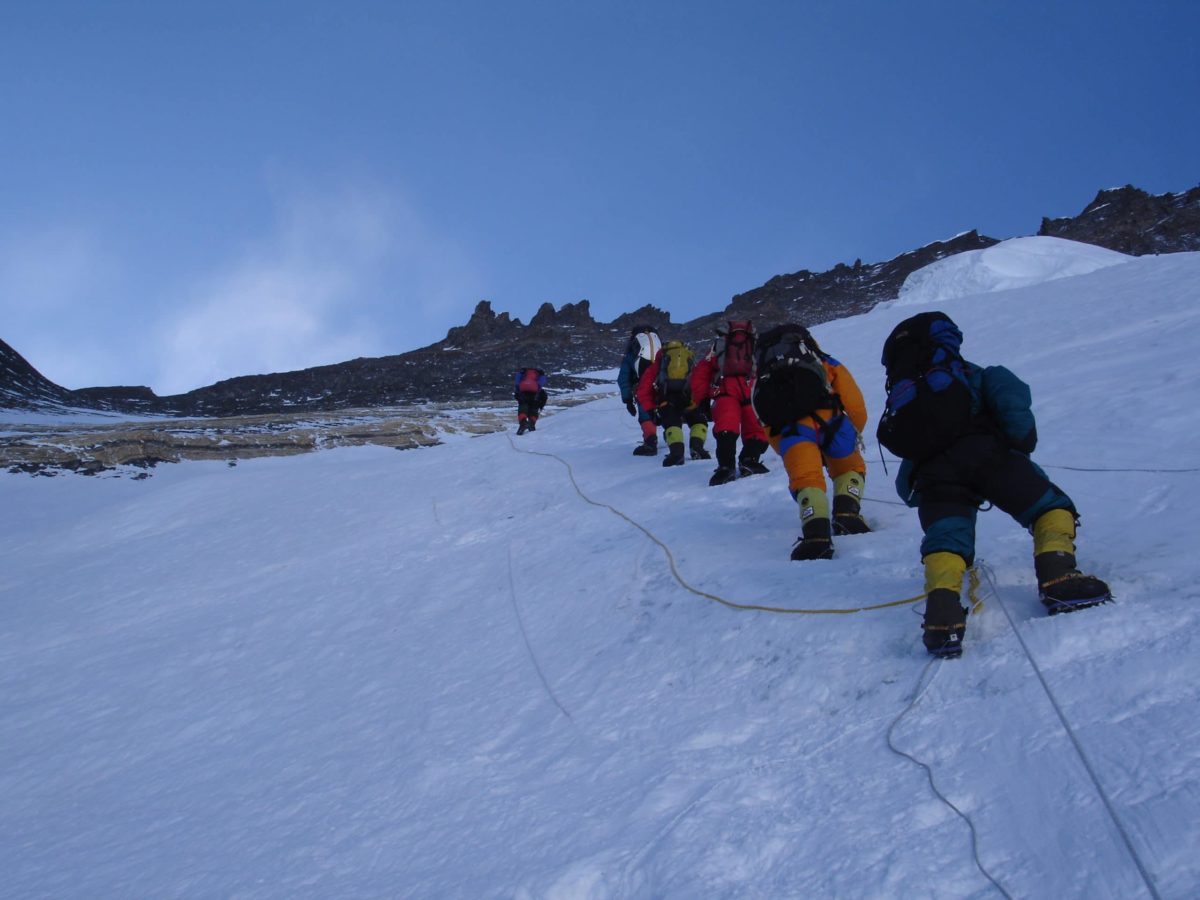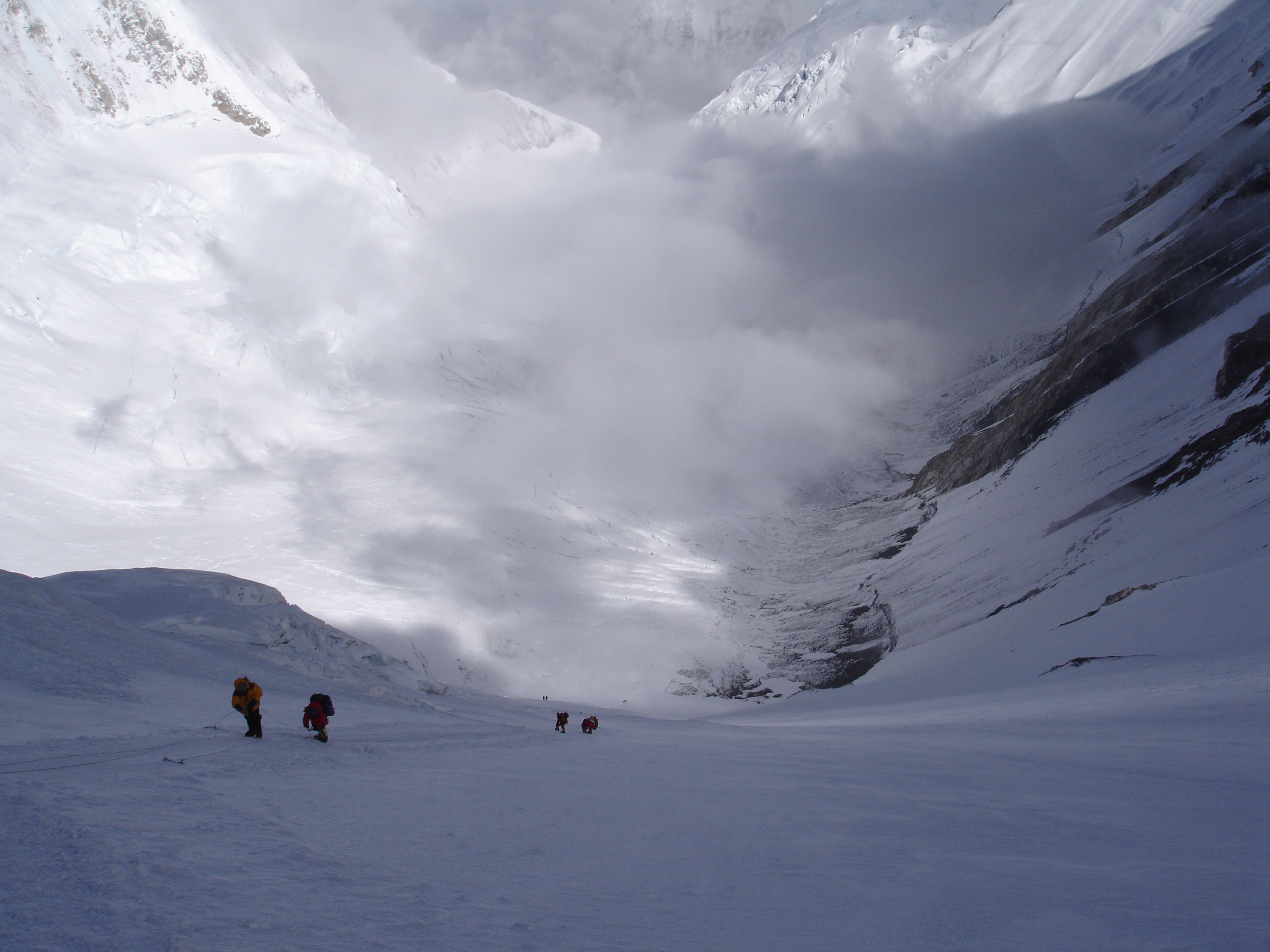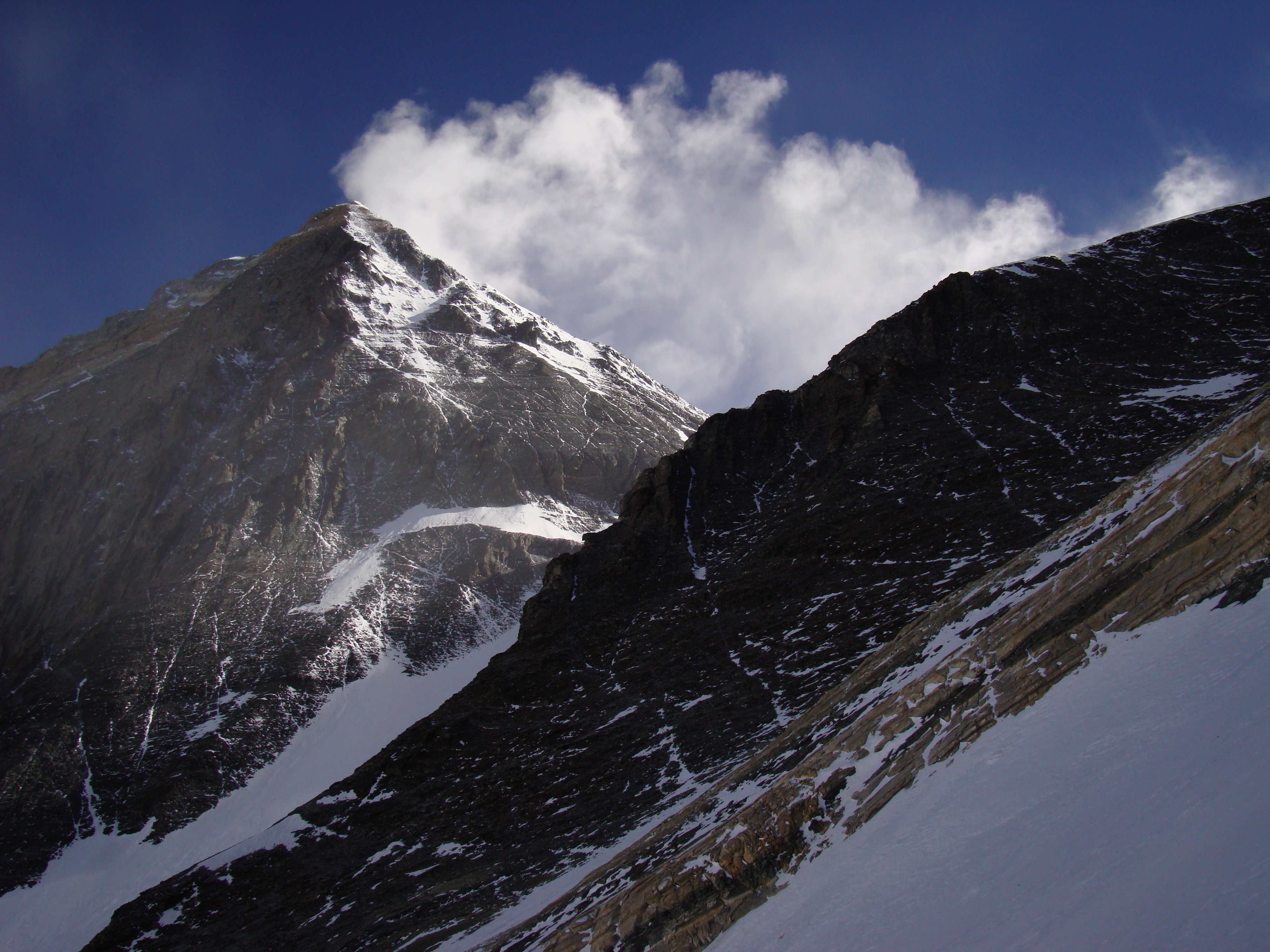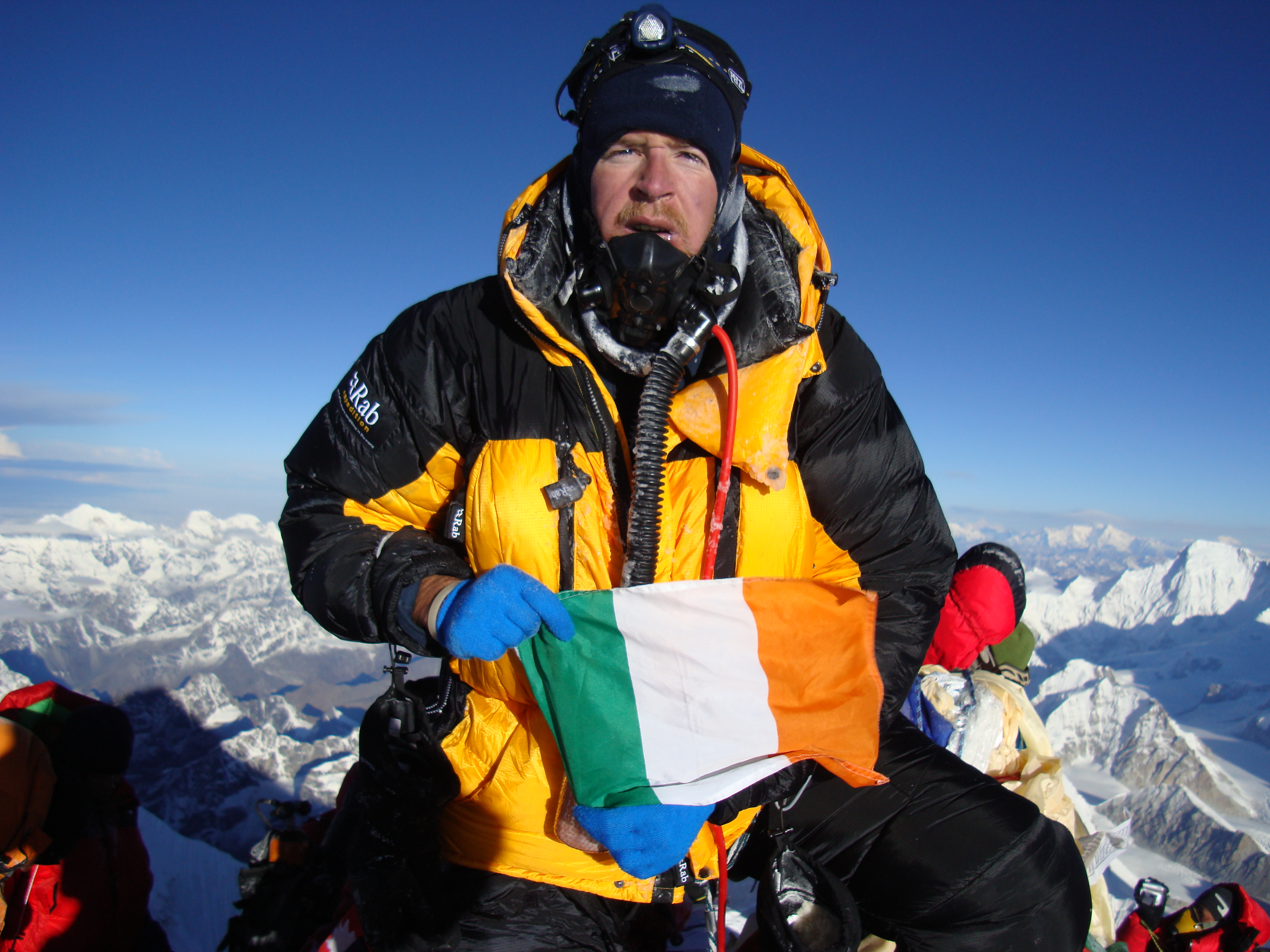We get asked all the time what a logical progression in mountaineering to Climb Mount Everest. There is never a one size fits all answer with this in mind, each person needs to assess a range of factors. Check out all our upcoming trips.
Logical Progression in Mountaineering to Climb Mount Everest
1). How much money do you have available because, these adventures are not cheap?
2). How much time you want to allocate to the challenge (3,5,10 years).
3). Do you need support or sponsorship in case you cannot come up with the funds?
4). Your current level of mountaineering and importantly overall experience.
5). How much high and extreme altitude experience you must be safe and successful.
Get a Vo2 Max Test
If I was starting with no experience and wanted to climb Mount Everest this is where I would start. I would first do a fitness test and Vo2 max test and compare my fitness levels with athletes. In my opinion you need to be training just like an athlete. Remember you are planning to put your life on the line to climb a Mountain. Use the best science available and put yourself in control importantly, helping you come fully prepared.
Respect the Sherpa Climbers
In recent years Mount Everest has turned into a more dangerous place. Too many people are coming to Everest with a lack of experience and lack of respect. Some people blame the Nepalese Government for issuing too many permits and others blame poorly operated local companies. There are lots of factors, but too many people are flocking to this mountain. This adds to the risk to the local climbers supporting summit attempts. In my opinion, you need to be a self-sufficient mountaineer before stepping foot on Mount Everest. Respect the mountains and the locals who risk their lives. Follow us on Instagram.
Start With Mountaineering Basics
Join a course in Scotland or Colorado. Your goal is to be self-sufficient and relying on yourself to make the best decisions for your safety and the people around you. Himalayan mountaineering is very different than Alpine style climbing. You need to very proficient in using a Jumar, figure of 8. Understand knots and have the rope skills and used to using mountaineering boots, crampons etc. Do you know how the oxygen system works on Mount Everest? Why would you learn this on the mountain?
Be Very Familiar With Camping
Firstly, be comfortable camping and using tents. Secondly, you need to be competent managing your personal gear and clothing. Thirdly, you need to learn how your body reacts to cold weather and what layers, gloves, boots work for you. Finally, you need to become very comfortable in all conditions, situations and have a wide range of experience to fall back on. How is your camp craft? you will need to be very proficient in managing yourself in a range of mountain environments.
3). The Battle on Mount Everest is the Altitude
Everyone responds differently to the low levels of oxygen in particular, the low levels of oxygen can be lethal. The more experience you have in low oxygen environments the better prepared you will be when it comes to making decisions at high and extreme altitude. I know people whose altitude limit is 10,000 feet and other people who cannot break the 23,000 feet mark. You need to know this before you climb Mount Everest. You need a personal benchmark in altitude experience so you can be safe moving into extreme altitude. In my experience and without a doubt you need have climbed above 25,000 feet before going to Mount Everest.
I personally believe everyone should be training, preparing, and developing the skills needed to be safe. Knowing how your body performs at altitude is important. A couple of trips to 17,000 /19,000 feet will not tell you this. Everyone should be consider having more experience not less when it comes to climbing Everest. More experience means more confidence and knowledge so you can make good decisions at extreme altitude.
Logical Progression in Mountaineering to Climb Mount Everest
1). Climb Kilimanjaro:
Kilimanjaro has a lot of support from porters, but you can carry 10kg/ 22lbs each day on the trail and you can understand what it is like to move and exercise in a low oxygen environment carrying weight. We run 8 day Kilimanjaro and this is a fast ascent into high and extreme altitude. Kilimanjaro will give you experience in a low oxygen environment with a big ascent and descent built into the trip. READ MORE about the summit night on Kilimanjaro. This summit attempt will help you gauge if your current physical training is on track or you need to make some adjustments. LEARN MORE.
2). Everest Base Camp and Lobuche Peak:
Take a trip to Nepal and become familiar with the country, Sherpa people, culture, mountain weather and overall experience of being in Nepal. I recommend coming in climbing season March to May and be apart of it. Trekking to Everest is important to experience Everest Base Camp then hike up Kala Patthar 18,520 feet and get that close up view of Mount Everest.
You may change your mind! As part of your mountaineering training you should aim to climb Lobuche Peak. Steep 60 degree angle climbing at 20,000 feet using your jumar, getting used to moving on fixed lines, abseiling on steep terrain using your figure of 8 is really important. An alternative to this would be to take on one of our Mera and Lobuche Peak climbs in one exciting adventure. I recommend doing this in the October, November climbing season. LEARN MORE.
3). Climb Mount Elbrus:
Mount Elbrus is one of the seven summits and highest peak in Europe. Climbing Elbrus helps you experience cold harsh weather and will help you test your gear that little bit further. As you can see in out Elbrus video, the weather can be cold, windy and arctic conditions even during the summer months. I recommend climbing in late May or June to give you colder conditions. LEARN MORE.
4). Climb Cotopaxi and Chimborazo:
The volcanoes of Ecuador are well known among mountaineers. The country’s highest, Chimborazo 20,702 feet, was first climbed in 1880. Due to our planet’s equatorial ‘bulge’, it is the furthest point from the center of the earth. The same expedition also climbed Cotopaxi 19,347, famously sleeping on its summit. Ecuador is a mountaineers paradise and these climbs help develop mountaineering techniques, test your gear and equipment. This trip also aids in your altitude knowledge and development.
5). Climbing Aconcagua:
Climbing Aconcagua on the traverse route is important for a number of reasons. Firstly, the expedition style. Moving equipment, food and gear up the mountain establishing a number of different camps helps you understand what it is like to have a base camp, camp 1, camp 2 and camp 3. Learning what it feels like to carry 16kg/ 35+lbs in low oxygen environments is extremely important. You will move up and down the mountain acclimatizing and moving equipment and gear as you go.
Aconcagua also has harsh cold conditions which will help you prepare for Mount Everest. Aconcagua’s summit night is also very useful, showing you what it is like to move almost 1,000m/ 3,280 feet up and down on at extreme altitude. The other benefit of climbing Aconcagua is, it helps you get a feeling for what it is like to try and sleep at 6,000m/ 19,685 feet and spend time at this elevation and see how you cope in this environment. LEARN MORE.
6). Everest North Col Expedition:
Instead of Aconcagua you could look at climbing to 7,010m/ 23,000 feet on the North Col of Mount Everest. This would enhance your understanding of Himalayan weather, climbing and mountaineering techniques. Mountaineering experience on Everest is so valuable as you evaluate your ability to come back and make a summit attempt.
7). Climb Denali:
Climbing Denali is a great way to prepare for Mount Everest. Denali like Aconcagua teaches you how to manage your equipment and what to bring and not to bring. You will have to carry and pull all your equipment so this is a great exercise in how to move equipment and gear on challenging terrain and potentially harsh weather. Climbing Denali is no easy feat and a great place to put all the skills you have learned into play.
8). Climb Cho Oyu:
Climbing one of the world’s highest mountains brings it’s rewards and if you are lucky enough to stand on summit you will be granted the most impressive view of Mount Everest and surrounding Himalaya’s. This sets up you for your Everest attempt. Having used the oxygen system, being used to moving on similar terrain of high and extreme altitude is extremely important. Breaking the 8,000m/ 26,246 feet mark also gives you the confidence and understanding of what it takes to climb under extreme stress and pressure and if your body can function correctly in these low oxygen environments.
9). Climb Mount Everest?
When approaching these mountains you need to do so humbly. Be respectful of the local people who will help you one way or another in your dream of Climbing Mount Everest. You should come fully prepared so that you are not putting other people in danger. When climbing Everest consider doing some of the load carry’s yourself and being prepared for that. Don’t have the minimum level of experience and training and expect the the Sherpa climbers to take all the risks, Risking their lives in your endeavor to stand on the top of Mount Everest doesn’t sound like the right approach to me.
Talk to the Experts
We hope this post about the logical progression in mountaineering to Climb Mount Everest was useful. If you would like to talk through all aspects of climbing Mount Everest and take the first step, contact us today.




